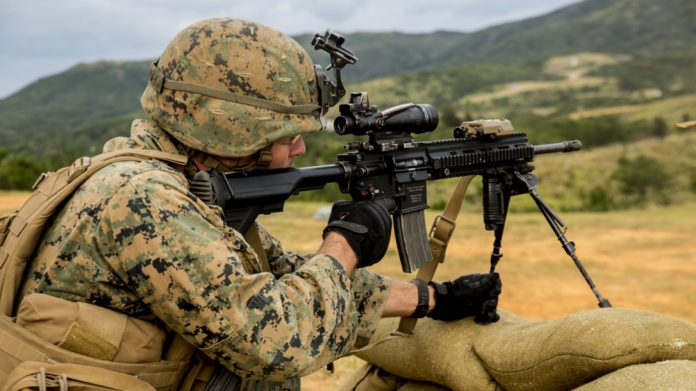
The Marine Corps is all about their rifles and is all about being a Corp of riflemen. Along the way, the USMC has largely followed the rest of the military in terms of rifle adoption. They used the M1 Garand, the M14, the M16, so on and so forth. However, the Marine Corps will occasionally depart from the norm, and I’ve gathered five unique rifles used by the Marine Corps. With November being the birthday month of the Marine Corps, it seemed timely.
M1895 Lee Navy
Other services love to point out that the Marine Corps is a department of the Navy. This is meant to point out the small size of the Marine Corps, and that big Navy is their daddy. That’s not always a problem. One of the unique rifles of the Marine Corps was one of the best rifles of its day. The M1895 Lee Navy saw adoption by the Navy, and in 1895 that means the Marines adopted it.

While the Army utilized the Krag, the Marines and Navy used the more modern and more capable Lee Navy rifle. This straight-pull bolt action rifle offered a faster action than the Krag and chambered an early smokeless cartridge called the 6mm Lee Navy. 6mm Lee Navy ammunition was lighter, and the Marines could carry more of it.
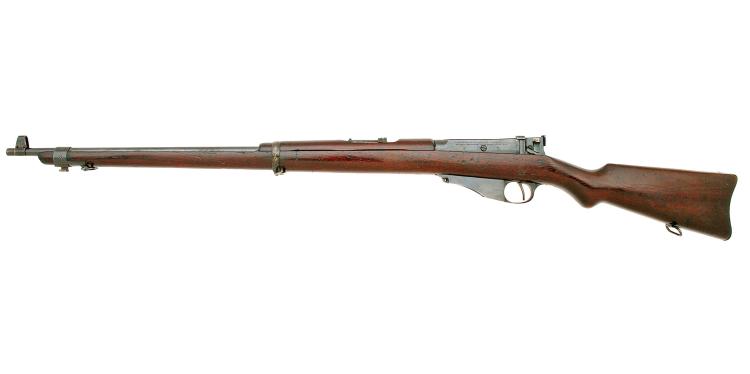
This proved quite handy in the Spanish-American war, where the outnumbered Marines outshot the Spanish Mausers during the race for Cuzco Well. The Marines faster firing rifles, and the fact they carried more ammo allowed them to make the most of their numbers.
SAM-R
SAM-R Stands for Squad Advanced Marksman Rifle, and this USMC invention predated the Marine Corps adoption of the Mk 12. The SAMR came from the Marine Corps Warfighting Laboratory to produce a modern designated marksman’s rifle equipped with a higher-powered optic for long-range precision.
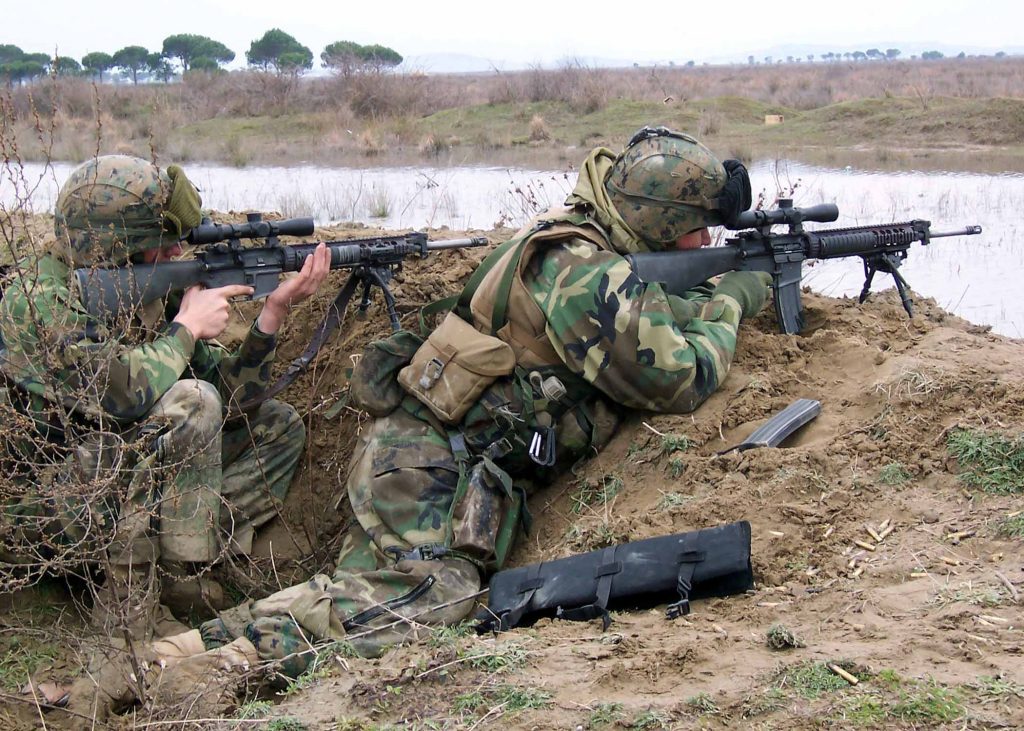
The Marine’s unique rifles were assembled at the Precision Weapons Section of the Weapons Training Battalion out of Quantico.
They made use of an M16A4 with a free-floating rail system, a stainless steel match grade barrel, and an M16A1 trigger assembling. Burst triggers suck and decrease the accuracy of the shooter by being crappy triggers (their break weight changes).
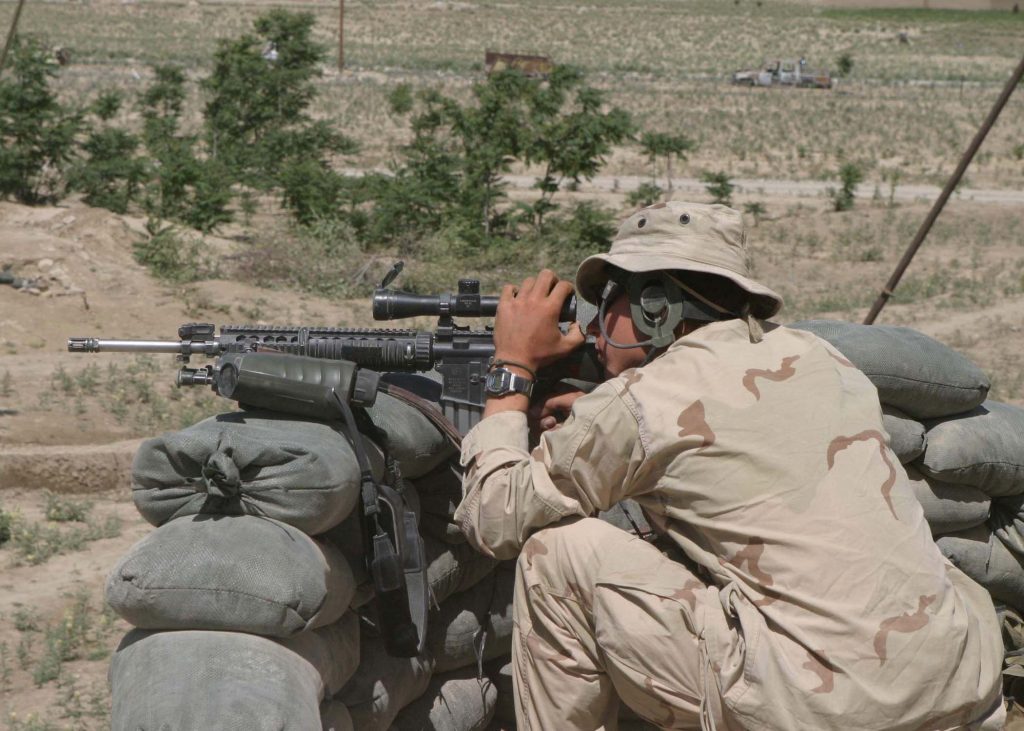
The Marine Corps then tossed on a bipod, and a variety of day optics were utilized along the way. The most common being the TS-30A2, aka the Leupold Mark 4 M3 3-9×36 scope. Marines also used ACOGs on these rifles, but the fixed 4X limited the Marine’s long-range precision accuracy.
MK13 Mod 7
While a lot of the professional sniping community moved to semi-auto platforms, the Marine Corps clung to its bolt guns! Well, kind of. The Marine Corps employs tons of semi-auto sniper rifles, but they also field a series of unique rifles that date back to 1966. The Mk13 Mod 7 is a Remington 700 placed into an Accuracy International Chassis system.

The Marine Corps didn’t need another 7.62 NATO rifle, and the Mk 13 Mod 7 utilized the powered .300 Winchester Magnum. This caliber swap extended the effective range of Marine snipers to 1,300 meters. To allow them to see that far the scope of choice is the Nightforce Advanced Tactical Riflescope.
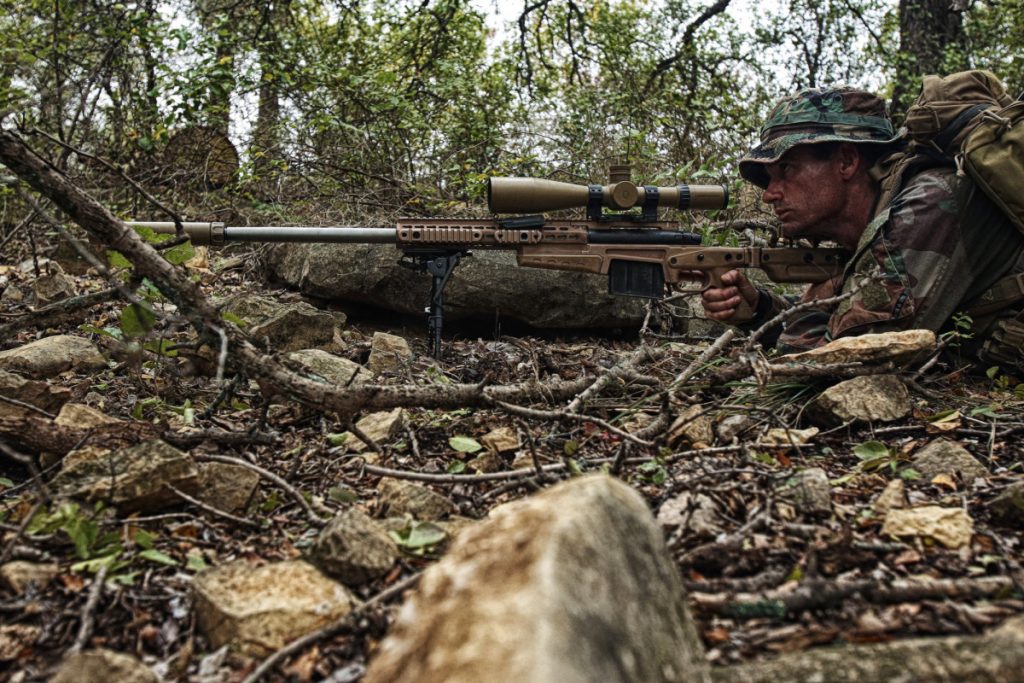
The Mk 13 Mod 7 will wear a suppressor and bipod to increase accuracy and hide the signature of snipers in their hides. This advanced rifle represents a departure from the M40, which has severed with Marines since Vietnam.
USMC DMR
Early in the Global War on Terror, the Marines realized they needed a new type of rifle. They needed an accurized rifle with an optic at the squad level. This caused the Marines to produce the USMC Designated Marksman Rifle. The term DMR now applies to a variety of rifles, but the Marine Corps is creative in creating unique rifles, not naming them.
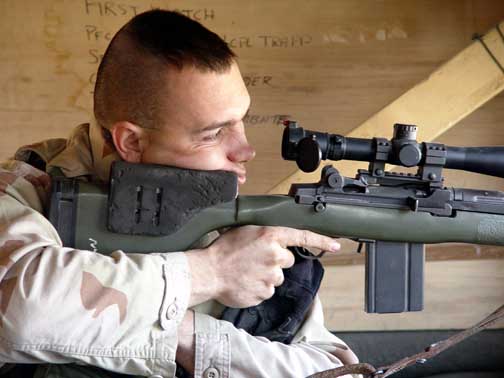
The USMC DMR took old M14s and accurized them. This isn’t a great idea as they can lose that accurization when disassembled. However, in 2001, they didn’t have a lot of options, and the M14 worked. The DMR predated the M39 and utilized an M14 with a 22-inch stainless steel match-grade Krieger barrel.
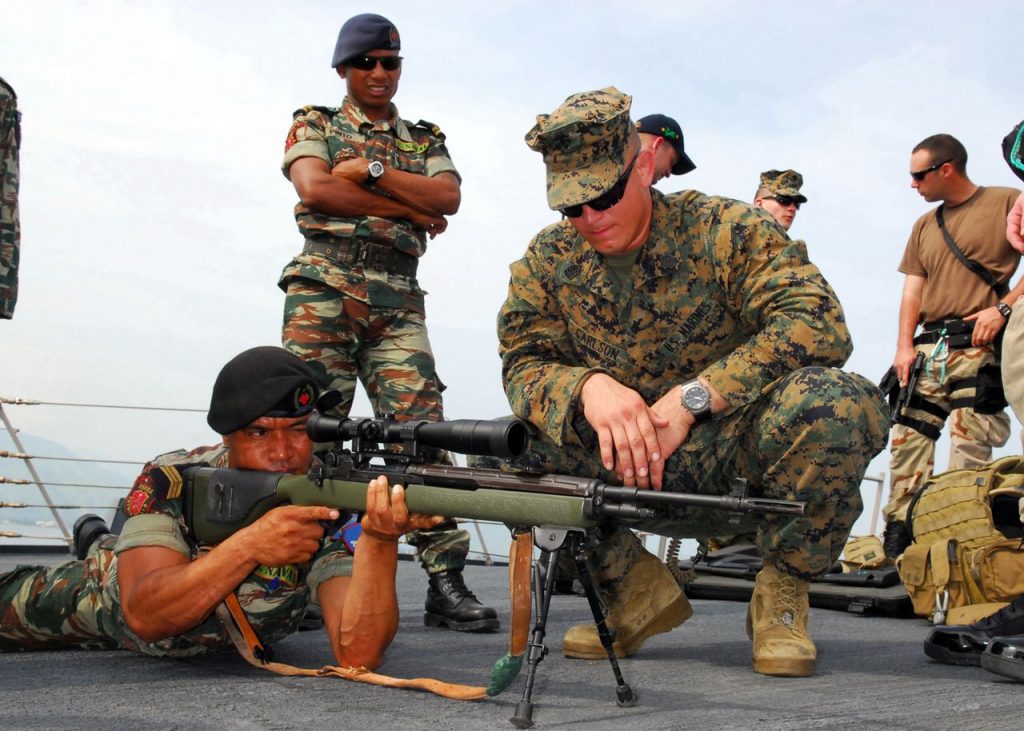
A McMillian Tactical M2A fiberglass stock offered a pistol grip and an adjustable cheek riser. Attached to the stock were a Harris S-L bipod and a Leupold Mark 4. Although, on occasion, the Unertl M40 10X was also used. These DMRs stayed in use until 2014 with certain teams.
M27 IAR
The Marines pulled a rather sneaky move. They started a program to replace the SAW with an automatic rifle, and along the way, used it to replace the M16A4 and M4 in the hands of infantry Marines. The M27 IAR now serves as the general issue rifle to Marine combat arms. Its brother, the M38, also serves as a DMR with a more powerful optic.

HK built the M27 IAR based on the HK416. The M27 IAR promised more firepower and accuracy than the old M16 series of rifles. I can attest that every IAR gunner in my company shot Expert with quite high scores on qual day.
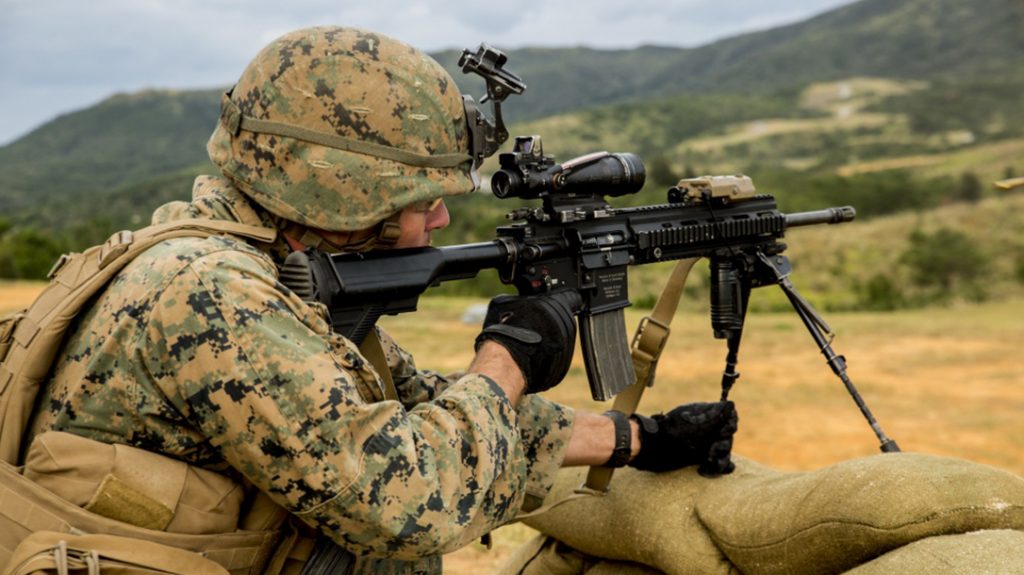
The M27 IAR proved that accurate fire could work as well as a volume of fire from a belt-fed. Thus, the M27 IAR became one of the first unique rifles the Marine Corps ever issued en masse. The move made the Marines more agile and more lethal. At the end of the day, that’s exactly what you want Marines to be.
Unique Rifles and the USMC
We started this list with a rifle the Marines used outside the norm in 1895, and we’ll end with one used in 2021. Throughout time the Marine Corps has independently developed different programs to make the individual Marine a better, more accurate warfighter. These programs, like the SAM-R and DMR, became concepts used around the entire military. Being the smallest branch has its advantages, and one of those advantages is the freedom to be creative problem solves. In the Marine Corps, most problems can be solved with rifles, and this list is a testament to that.



